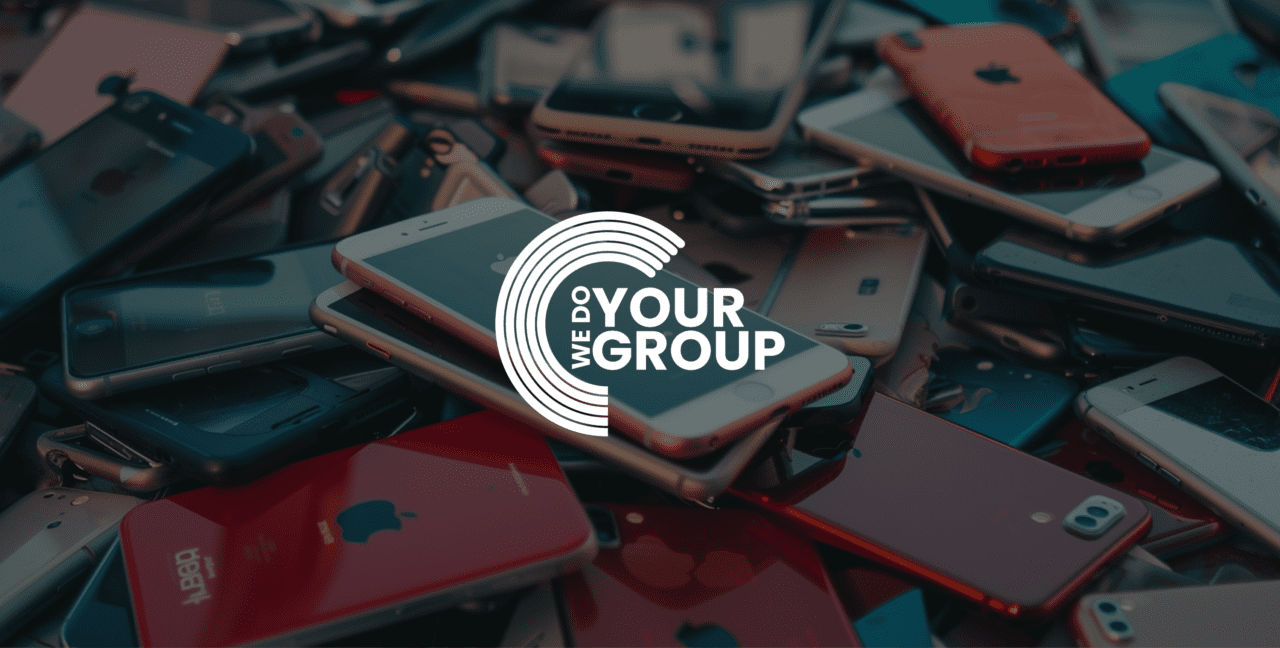
Redefining Productivity: Mindful Practices in the Digital Workspace

The Rise of Technostress: Understanding the Impact on Workplace Wellbeing
In today’s digital-first world, ‘technostress’ poses a growing challenge for global workplaces, detrimentally impacting employee wellbeing and organisational productivity. This phenomenon, arising from the relentless need to interact with digital technologies, leads to stress, anxiety, and eventually burnout among professionals. With nearly half of the global workforce reporting stress, a number that increases in regions such as the US and Canada, the economic impact is significant, with the US alone facing about $300 billion in annual productivity losses. These figures underscore the importance of good mental health support and wellbeing initiatives. There’s a pressing need for the adoption of ‘Digital Mindfulness’ practices and enhanced mental health support to alleviate the adverse effects of digital stress. By focusing on mental health care and introducing wellbeing initiatives, we can foster a healthier, more resilient workforce.
Breaking Free from Digital Burnout: How ‘Digital Mindfulness’ Can Help
The constant influx of emails, notifications, and virtual meetings has led to ‘digital burnout’, a condition increasingly recognised as a threat to our mental and physical health. Amidst this, ‘Digital Mindfulness’ stands as a promising solution to combat the adverse effects of our hyperconnected existence. By integrating mindfulness—an age-old practice emphasising presence and active engagement in the present—into our digital habits, we can enhance our mental health. This mindful approach to technology not only reduces stress and anxiety from digital saturation but also boosts productivity and promotes well-being among employees. Encouraging employees to embrace digital mindfulness can improve mental health, mitigate the risk of mental ill health, and ensure a healthier balance between technology usage, physical health, and mental well-being, leading to a work environment where technology enhances rather than detracts from our overall health and work-life harmony.
Mindful Technology Usage: An Essential Component for Employee Productivity
In the high-demand, digitally overloaded environment of today’s workplace, adopting a mindful approach to technology usage is crucial for enhancing employee productivity and addressing mental health concerns. Embracing the concept of ‘Digital Mindfulness’—the conscious engagement with digital devices and platforms—is vital for counteracting the adverse effects of technostress and promoting a technology use that improves work-life balance. By implementing strategies that promote intentional, focused interaction with technology, organizations can better support their employees in managing mental health challenges and cultivate a culture of wellness through their workplace mental health initiatives. This strategy ensures that technology acts as an ally in achieving success rather than a source of stress, by weaving digital mindfulness into the organisation’s ethos. Providing thorough support, which includes training and resources aimed at fostering mental health and digital equilibrium, is fundamental to the effectiveness of these mental health at work programs. By pursuing such initiatives, companies can foster a healthier work environment, enhance work-life harmony, and drive greater efficiency and innovation, all the while offering robust support to employees grappling with mental health issues.
From Tradition to Transformation: The Evolution of ‘Digital Mindfulness’
Drawing on centuries-old Buddhist principles, the concept of mindfulness has been transformed to meet the challenges of our digital era, giving rise to ‘Digital Mindfulness.’ This evolution marries ancient wisdom with modern technology, creating a new approach to digital interactions that emphasizes mental health and wellbeing. By incorporating digital mindfulness into mental health training programs, companies can encourage employees to develop a mindful relationship with technology. This adaptation not only extends traditional mindfulness practices into practical strategies for managing digital consumption but also promotes employee wellbeing by helping individuals navigate the digital world with intention and awareness. Providing employees with the tools to combat digital overload can foster a culture of focus, resilience, and enhanced productivity, thereby prioritising mental wellbeing in the workplace. The shift towards Digital Mindfulness signifies an important step in harmonising technology use with human health and organisational efficiency, underlining the importance of embedding well-being into our digital interactions.
The Cost of Stress in the Workplace: How Technostress is Hurting Your Business
Technostress is exacerbating mental and physical health problems among employees, contributing to a substantial financial burden on businesses. With digital overload pushing nearly half of the global workforce into higher stress levels, the impact on productivity and employee wellness is severe—costing U.S. businesses around $300 billion annually. This crisis, highlighted during Mental Health Awareness Week, goes beyond direct productivity losses to encompass healthcare costs, increased turnover, and the erosion of intellectual capital. As a mental health problem with tangible effects on physical health, technostress necessitates a comprehensive response. Employers are urged to implement Employee Assistance Programs and collaborate with organizations like the Mental Health Foundation to address this complex issue, protecting employee well-being and the company’s financial health.
Mindfulness in the Digital Age: Redefining Our Relationship with Technology
In today’s fast-paced digital world, the concept of ‘Digital Mindfulness’ has emerged as a key component of workplace wellbeing initiatives, underscoring the urgent need to redefine our relationship with technology. This modern take on mindfulness aims to ensure a balanced digital interaction in the workplace, positioning technology as a supportive tool that enhances, rather than disrupts, our work and life. By integrating practices that foster presence, intention, and focused attention into our digital activities, we can mitigate the widespread issue of technostress, promoting employee wellbeing. This approach not only boosts overall employee mental health but also renews our productivity and creativity across professional and personal endeavors. As digital tools become increasingly integral to every facet of our operations, adopting the principles of Digital Mindfulness is crucial for creating work environments that support employee wellbeing and thrive alongside the technological advancements shaping our era.
Transforming Work Culture: Implementing ‘Digital Mindfulness’ for a Healthier Workplace
Adopting ‘Digital Mindfulness’ within an organisation involves more than just managing screen time or encouraging digital breaks; it represents a fundamental shift towards valuing mental health and promoting employee well-being in the workplace culture. Incorporating mental health support and occupational health support into the fabric of daily operations – through practices like mindful emailing, scheduled digital detoxes, walking meetings, and balancing connectivity with disconnection – not only fosters a healthier, more engaged workforce but also combats technostress effectively. This approach leads to enhanced concentration, increased job satisfaction, and lower burnout rates among employees. By prioritising ‘Digital Mindfulness’ and embedding comprehensive mental health support within their culture, businesses not only improve their employees’ overall well-being but also emerge as resilient, forward-thinking entities in the digital era.
The Power of Awareness: How Daily Practices of ‘Digital Mindfulness’ Can Benefit Employees
The integration of ‘Digital Mindfulness’ into daily routines offers a powerful tool for improving employee well-being and productivity as part of a comprehensive employee wellbeing strategy. By encouraging mindfulness in the use of digital devices, employees can combat work-related stress and mitigate mental health issues associated with digital overload. Adopting simple practices such as taking regular breaks from technology, avoiding multitasking, and scheduling specific times for email can significantly enhance psychological well-being. These practices not only help in developing a healthier relationship with technology, reducing digital fatigue and stress, but also lead to improved focus, creativity, and mental clarity. Embracing this mindful approach aids in managing the psychological impacts of technology use, fostering a sense of control and presence. Moreover, it enriches the organizational culture, creating a more engaged, satisfied, and resilient workforce by addressing key aspects of mental health and well-being.
Leading with Mindfulness: Cultivating Mindful Leaders in the Digital Workplace
In today’s digital age, fostering work-life balance and enhancing employee satisfaction through mindful leadership is paramount. Mindful leaders integrate ‘Digital Mindfulness’ into their management approach, championing a work culture that prioritizes balance, focus, and well-being in the face of digital chaos. By leading with awareness, intention, and empathy, they not only mitigate the risk of mental illness but also boost employee well-being, creating a digital workplace that is both thoughtful and productive. Their dedication to mindfulness in professional settings not only encourages employees to develop similar practices but also fosters a supportive atmosphere where individuals and teams can excel without falling prey to digital burnout. Developing mindful leaders is key to promoting positive change, guiding the organization towards sustainable success by ensuring work-life balance, employee satisfaction, and overall well-being in our rapid digital environment.



